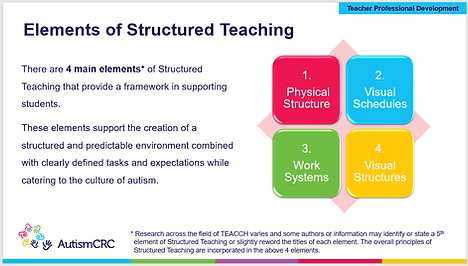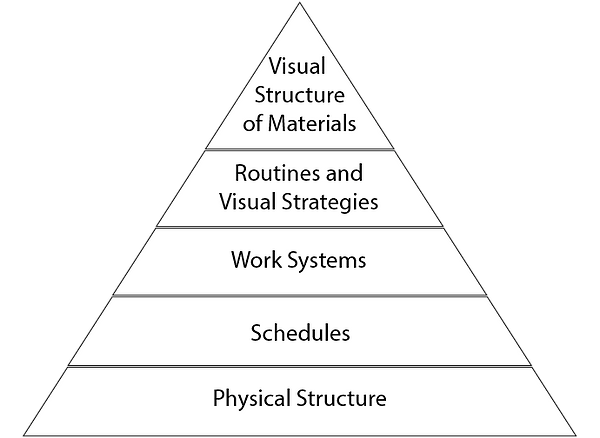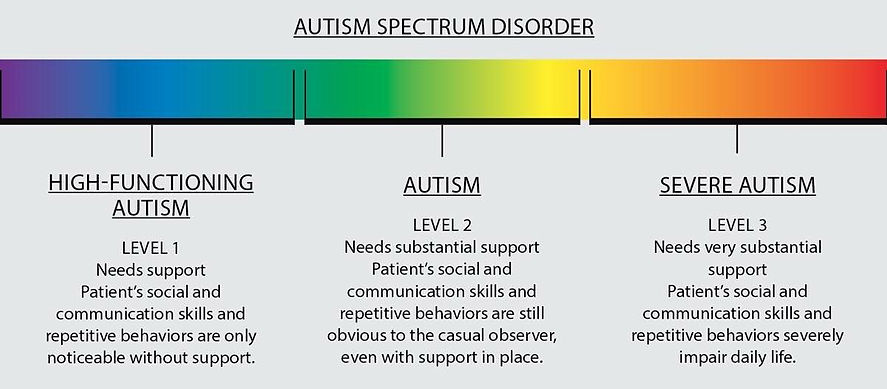SPED/ASD/HIGH INCIDENCE DISABILITIES
EDUCATION & EXPERIENCE PORTFOLIO
SPECIAL EDUCATION, HIGH INCIDENCE DISABILITIES, AUTISM SPECTRUM DISORDERS, EMOTIONAL BEHAVIORAL DISORDERS,
INTELLECTUAL DISABILITIES, RESOURCE SUPPORT & CURRICULUM DEVELOPMENT, BEHAVIOR INTERVENTION,
GENERAL EDUCATION, AVIAN-ASSISTED INTERVENTION, APPLIED BEHAVIOR ANALYSIS, PROGRAM EVALUATION,
EVIDENCE-BASED PRACTICES, ANIMAL ASSISTED THERAPY & INTERVENTION
MODULE 1: STRUCTURED TEACHING AND THE CULTURE OF AUTISM


"Structured teaching is an approach to help learners with ASD understand their environment and daily activities using a visual mode. The Treatment and Education of Autistic and related Communication Handicapped Children (TEACCH) program at the University of North Carolina at Chapel Hill developed the program which is designed to consider the typical thought and behavior patterns of learners with ASD. The program was developed to be in line with many key constructs related to the "Culture of Autism" movement" (University of Kansas; 2023).
The Culture of Autism
"The Culture of Autism (as it relates to Structured Teaching) is a conceptual framework grounded in the belief that ASD is a unique way of being and not a disorder to be cured. Culture refers to shared patterns of human behavior. Cultural norms affect the way people think, eat, dress, work, spend leisure time, understand natural phenomena, and communicate. Cultures vary widely in these respects, so that people in one cultural group might at times find those from another group to be difficult to understand or unusual. In the same respect, differences may be interpreted in a negative manner, and people from other cultural groups may view those differences negatively, seeing them only as deficits" (University of Kansas; 2023).
Structured Teaching
"Structured Teaching is a system of environmental supports and instructional strategies, and NC has implemented the program state-wide to serve learners with ASD. Structured teaching strategies can be implemented across settings and curriculum area, as they serve as a vehicle to teach skills in varied settings. These teaching strategies are based on an understanding of how ASD impacts the thinking, learning, and behavior of an individual with ASD. Differences in auditory processing, imitation, motivation, and organization can hinder the educational success of learners with ASD, as most traditional teaching strategies rely heavily on verbal instructions, demonstration, social reinforcement, and sequencing chunks of information or directives. Structured Teaching strategies capitalize on the strengths of learners with ASD. These include providing predictable and meaningful routines through the use of structure, adding visual/structural supports to classroom instruction and activities to increase engagement and independence, and clearly organizing classroom spaces and teaching materials to reduce anxiety and increase appropriate behavior" (University of Kansas; 2023).
There are five elements of Structured Teaching that build on one another, and all emphasize the importance of predictability and flexible routines in the classroom setting. Division TEACCH developed a visual to illustrate the Structured Teaching components — the Structured Teaching pyramid:

TEACCH and Structured Teaching
TEACCH and Structured Teaching can help learners with ASD who may have difficulties with the following:
-
Relative strength in and preference for processing visual information (compared to difficulties with auditory processing, particularly of language)
-
Frequent attention to details, but difficulty understanding the meaning of how those details fit together
-
Difficulty combining ideas
-
Difficulty organizing ideas, materials, and activities
-
Difficulties with attention. (Some individuals are very distractible; others have difficulty shifting attention when it is time to make transitions)
-
Difficulty with concepts of time, including moving too quickly or too slowly and having problems recognizing the beginning, middle, or end of an activity
-
Communication problems, which vary by developmental level but always include impairments in the social use of language (called “pragmatics”)
-
Tendency to become attached to routines, with the result that activities may be difficult to generalize from the original learning situation and disruptions in routines that are upsetting, confusing, or uncomfortable
-
Very strong interests and impulses in engaging in favored activities, with difficulties disengaging once engaged
-
Marked sensory preferences and dislikes
Information adapted from TEACCH website: http://teacch.comLinks to an external site.
